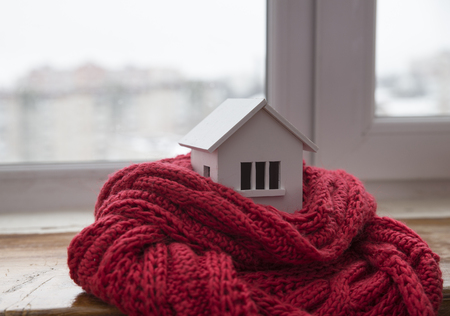How to Reduce Your Heating Bill
Buffalo winters are long and demanding. The right combination of quick fixes and smart upgrades can lower your heating bill without sacrificing comfort. Use this guide to target the biggest sources of heat loss and make your home more efficient, one step at a time.
At Ivy Lea Construction, we help Western New York homeowners seal drafts, improve insulation, and upgrade problem areas so homes stay warm and costs stay predictable.
Start With Quick Wins You Can Do Today
Let the sun help.
Open south facing curtains during the day to capture solar warmth, then close them at dusk to hold heat in.
Adjust the thermostat strategically.
Set occupied targets around 68 to 70°F and use a 7 day schedule to set back 6 to 8°F while you sleep or are away. A smart thermostat makes this simple.
Close the fireplace damper.
When not in use, a fireplace acts like an open window. Close the damper and consider a tight fitting flue balloon if the fireplace is decorative only.
Mind interior doors and vents.
Keep supply registers and return paths clear of furniture or rugs. Good airflow improves comfort at lower setpoints.
Stop Air Leaks Before Adding Heat
Warm air escapes through gaps in the building envelope, and that drives up energy use. Focus on these high impact areas first.
Windows and doors
-
Weatherstrip door jambs and add a quality door sweep
-
Caulk trim where gaps are visible
-
Use interior shrink film or insulated curtains on drafty windows until you are ready to replace them
Attic access
-
Seal and insulate the attic hatch or pull down stair cover
-
Close bypasses around light fixtures and plumbing stacks with fire safe materials
Basement and rim joists
-
Seal the rim joist at the top of foundation walls
-
Foam around pipe and wire penetrations
-
Check that sill plates are air sealed to the foundation
Ductwork
-
Seal accessible joints with mastic, not cloth tape
-
Insulate ducts that run through unconditioned spaces
Upgrade Insulation Where It Pays Back Fast
Insulation slows heat transfer so your furnace can work less and rest more.
Attic first
Most homes save the most by bringing attic insulation up to modern levels. Dense pack or blown cellulose and proper baffles at the eaves keep heat in and allow the roof to breathe.
Basement and crawl perimeter
Insulating foundation walls or rim joists reduces cold floors and drafts. Pair this with a continuous vapor barrier on exposed soil in crawl spaces.
Walls when remodeling
If you are opening walls for other work, add cavity insulation and an air barrier while everything is accessible.
Tune Up the Heating System
A little maintenance goes a long way.
-
Replace furnace filters every 1 to 3 months during heavy use
-
Schedule an annual service to check combustion, safeties, and efficiency
-
Balance registers so distant rooms receive enough heat
-
Verify that the thermostat is level and located away from drafts or heat sources
Water heating matters too. Set the water heater to 120°F, insulate the first few feet of hot and cold lines, and add an insulating jacket if the tank is older and in an unheated space.
Window Performance and When to Replace
If you still feel cold drafts after sealing and curtaining, it may be time to consider new windows. Modern insulated glass with low E coatings reduces heat loss, limits condensation, and improves comfort near the glass. Replacing the worst offenders first is a smart phased approach.
Moisture and Indoor Air Quality
Dry winter air can make lower temperatures feel chilly. Aim for 30 to 40 percent indoor humidity to balance comfort and condensation risk. Always use kitchen and bath fans to remove excess moisture and keep window frames dry. Install carbon monoxide alarms near sleeping areas whenever fuel burning appliances are present.
Priority List for the Best Savings
-
Air seal attic, basement, and obvious window and door gaps
-
Add or top up attic insulation with proper ventilation baffles
-
Tune and filter the heating system and seal accessible ducts
-
Program or upgrade the thermostat
-
Replace the poorest performing windows, starting with north and west exposures
-
Improve basement insulation at rim joists and foundation perimeter
Ready for a Warmer Home and Lower Bills
If drafts, cold floors, or high bills are wearing you down, Ivy Lea Construction can help. Our team will inspect, pinpoint the biggest opportunities, and handle the improvements that deliver real results.
Call 716-875-8654 or request a free estimate to get started. We will create a plan that fits your home, your budget, and Buffalo’s winter reality.

